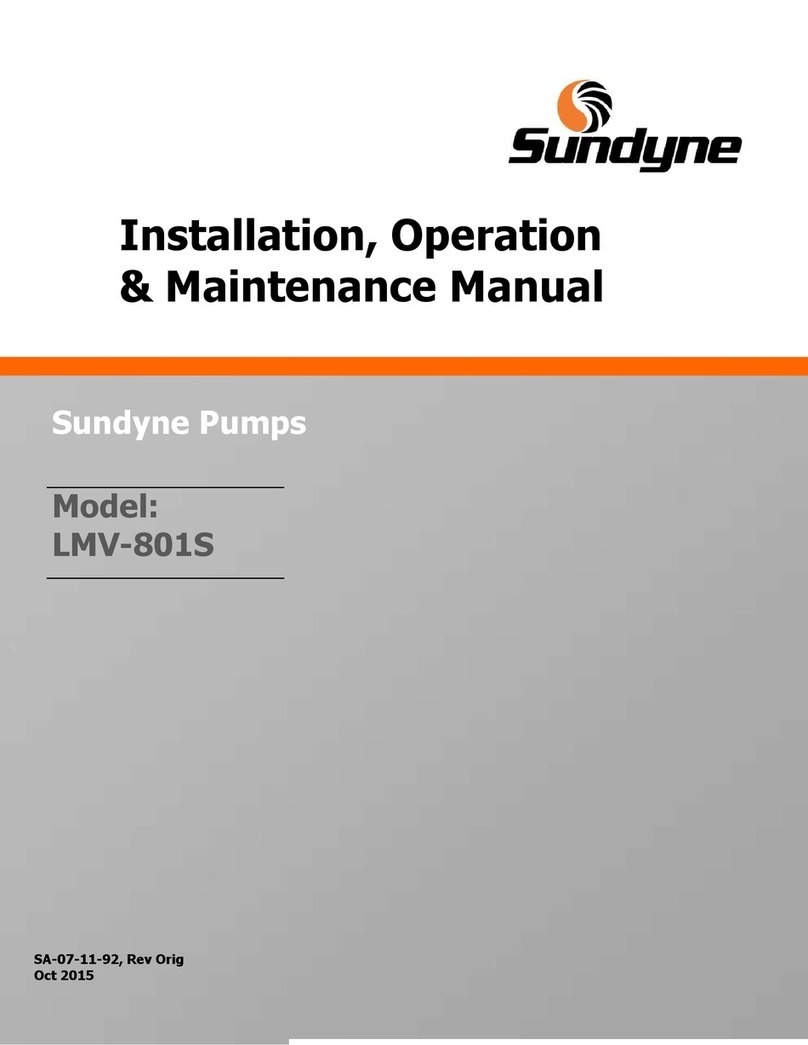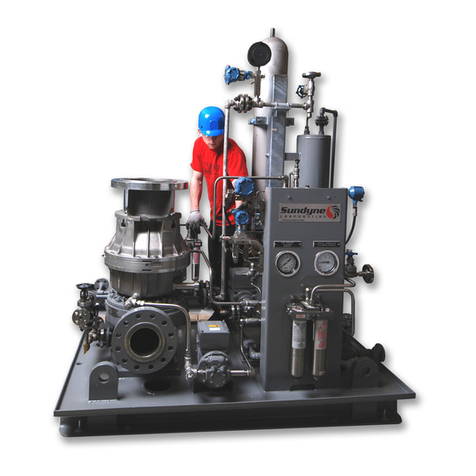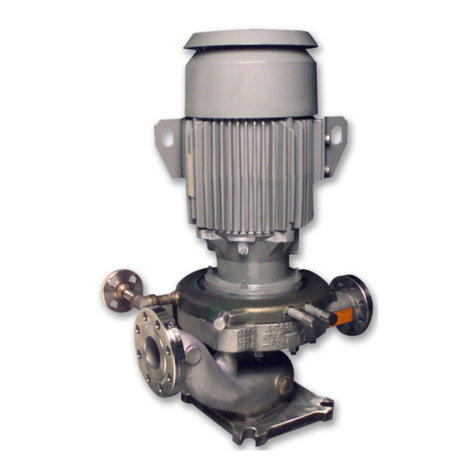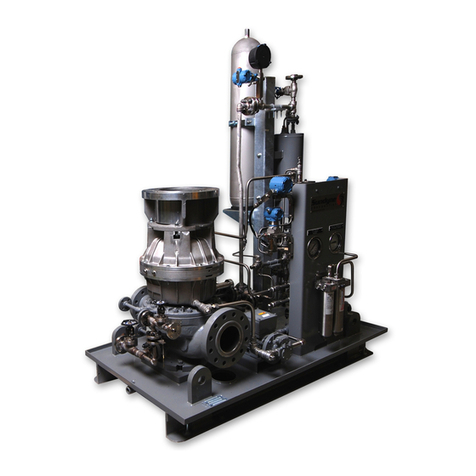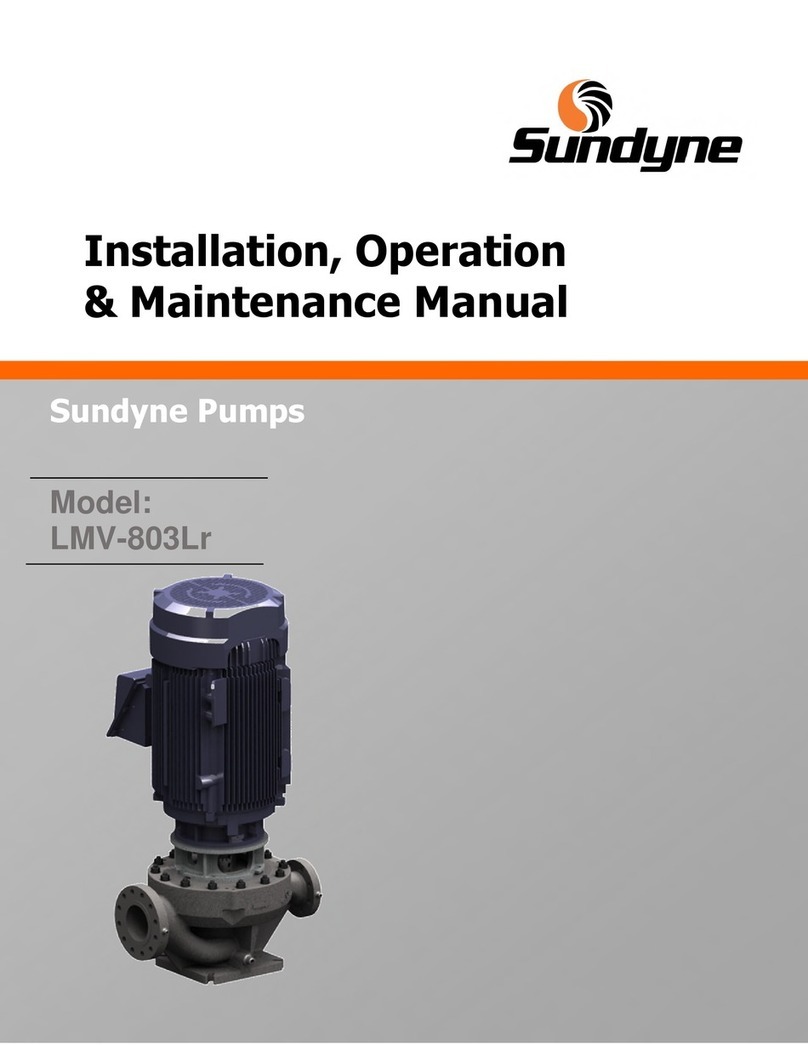
02.10.02E, 6/2000 Visit our website at www.sundyne.com 5
i. Introduction to the Sunflo P-3000 Pump
The Sunflo P-3000 pump is a high pressure/high speed centrifugal pump which provides multi-stage
performance from a single-stage unit. The frame mounted configuration offers a greater degree of
performance diversity and added driver flexibility such as the use of standard electric motors, steam
turbines, and internal combustion. The close-coupled design incorporates the proven Sunflo design in an
integral pump and motor package. This configuration provides a compact lightweight unit that does not
utilize bedplates, couplings or belts. Installation is simplified and alignment of the pump and motor is not
necessary. Close-coupled pumps are ideal for OEM packages and other industrial applications where a
frame unit is not desired.
Common uses include pollution control, chemical, petrochemical, power system services, pulp and paper,
vehicle manufacturing, mining, food and beverage, and oil products.
ii. Safety Precautions
Safety Warning
Sundyne Corporation manufactures centrifugal pumps to exacting International Quality Management
System Standards (ISO 9001 - 1987) as certified and audited by Lloyd's Register Quality Assurance
Limited. Genuine parts and accessories have been specifically designed and tested for use with these
products to ensure continued product quality and performance. As Sundyne Corporation cannot test all
parts and accessories sourced from other vendors, incorrect design and/or fabrication of such parts and
accessories may adversely affect the performance and safety features of these products. Failure to
properly select, install or use authorized Sunflo pump parts and accessories is considered misuse and
damage or failure caused by misuse is not covered by Sundyne’s warranty. Additionally, modification of
Sunflo products or removal of original components may impair the safety of these products and their
effective operation.
Suggested Safety Instructions:
During installation, maintenance, or repair operations of a Sunflo pump, systems for safety shall be
applied before the commencement of work. Failure to take responsibility for safety may lead to injury of
operator or others.
Personal Protective Equipment (PPE): Safety glasses with side shields, as a minimum, shall be worn
by all personnel installing or performing maintenance or repair on the equipment. If equipment is over 15
pounds (7 kg) and is to be manually lifted, or if pallet jacks or forklifts are to be used, steel-toed safety
shoes shall be worn. When testing the equipment, hearing protection is highly recommended if noise
levels exceed 85 dB during an eight (8.0) hour period. Chemical resistant gloves shall be used if chemical
use is required (see Chemical Use below for additional information). If chemicals have warnings
regarding fumes and/or dust/mists, a dust mask respirator shall be worn as a minimum.
When selecting one piece of PPE to be used with another, consider the compatibility between them. For
example, safety glasses should not interfere with the seal from hearing protection. Be sure to clean the
PPE after each use.
Use of Forklifts: All forklift drivers must have a current recognized license. If using a forklift, first ensure
that the lift is in a safe operating condition.


















